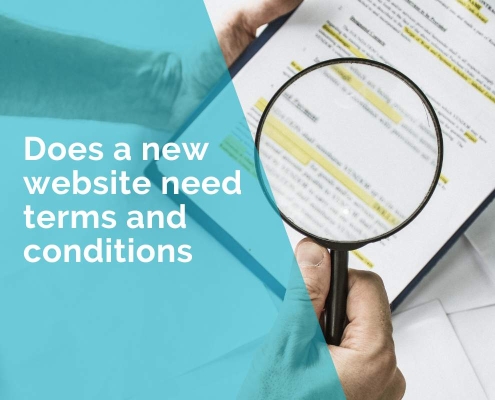Artificial Intelligence: Easy-to-Implement AI Tools for Small Business
Artificial Intelligence (AI) means teaching computers to act smart, like humans. They can learn, think, solve problems, and understand language, just like people do. Simply put, AI helps computers do things that need brainpower, like learning from experiences and making decisions.
AI is really important for small businesses today. It can do lots of things that make businesses work better and grow faster. For instance, it can do repetitive tasks automatically, so people can focus on more important work. Also, AI can analyze big amounts of data to find useful insights about customers and markets. This helps businesses make smart decisions and give customers what they want.
Chatbots: Enhancing Customer Support
A. Explanation of Chatbots
Chatbots are like friendly digital assistants that businesses use to talk to customers online. They’re powered by artificial intelligence, which means they can understand questions, provide answers, and even have conversations. Think of them as smart helpers that work 24/7, answering customer queries instantly without needing human intervention.
B. Benefits for Small Businesses
Chatbots bring several benefits to small businesses:
24/7 Support:
Chatbots never sleep! They’re available round-the-clock to assist customers, which is especially helpful for businesses with customers in different time zones or those that operate beyond regular business hours.
Cost-Effective:
Hiring human customer support agents can be expensive. Chatbots, on the other hand, offer a cost-effective solution, reducing the need for additional staff while still providing efficient customer service.
Instant Responses:
Customers want quick answers, and chatbots deliver just that. They can instantly respond to inquiries, helping businesses improve customer satisfaction and retention.
Scalability:
As businesses grow, so does the volume of customer queries. Chatbots can handle multiple conversations simultaneously, ensuring scalability without compromising service quality.
C. How to Implement Chatbots
Implementing chatbots for your small business is easier than you might think:
1. Choose a Platform:
There are various chatbot platforms available, each offering different features and pricing plans. Research and select a platform that aligns with your business needs and budget.
Here’s a list of popular chatbot tools that you can implement on your website or social media platform:
- Chatfuel: A user-friendly platform for creating AI chatbots on Facebook Messenger. It offers drag-and-drop functionality and supports various features like conversation flows, broadcasting, and analytics.
- ManyChat: Another popular tool for building chatbots on Facebook Messenger. ManyChat offers customizable templates, automation features, and integrations with other platforms like Instagram and SMS.
- Dialogflow (by Google): A powerful natural language understanding platform that allows businesses to create AI chatbots for websites, mobile apps, and messaging platforms like Facebook Messenger and Slack. It supports multiple languages and offers advanced machine-learning capabilities.
- IBM Watson Assistant: A comprehensive AI-powered chatbot platform that enables businesses to create virtual assistants for websites, mobile apps, and messaging channels. It offers natural language understanding, dialogue management, and integration with various third-party services.
- LiveChat: A versatile live chat software that also offers chatbot functionality. Businesses can create AI chatbots to automate responses, qualify leads, and provide customer support on their websites.
- Botsify: An easy-to-use chatbot platform that allows businesses to create AI chatbots for websites, Facebook Messenger, WhatsApp, and other messaging platforms. It offers drag-and-drop bot building, integration with third-party tools, and analytics.
- Drift: A conversational marketing platform that offers chatbot functionality for websites. Businesses can create AI chatbots to engage visitors, qualify leads, and schedule meetings.
- Flow XO: A chatbot platform that allows businesses to create AI chatbots for websites, Messenger, Slack, and other messaging platforms. It offers a visual editor, pre-built templates, and integrations with various third-party services.
- Tidio: A live chat and chatbot platform for websites. Tidio offers AI chatbots to automate customer support, capture leads, and engage visitors in real-time conversations.
- HubSpot Chatbot Builder: Part of the HubSpot CRM platform, the chatbot builder allows businesses to create AI chatbots for websites and Facebook Messenger. It offers customizable templates, lead qualification, and integration with HubSpot’s marketing automation tools.
2. Design Conversational Flows:
Determine the common questions and issues your customers might have and design conversational flows accordingly. Make sure the chatbot can provide relevant and helpful responses.
Below are some examples of common questions and issues that customers might have for different types of businesses, along with how a chatbot could be designed to provide relevant and helpful responses:
E-commerce Business:
Common Question: “Do you have this product in stock?”
Chatbot Response: “Yes, we currently have [Product Name] in stock. Would you like to place an order?”
Common Issue: “I need to return an item.”
Chatbot Response: “I’m sorry to hear that. To initiate a return, please provide your order number and reason for return, and we’ll assist you further.”
Software as a Service (SaaS) Company:
Common Question: “How do I reset my password?”
Chatbot Response: “To reset your password, please visit our login page and click on the ‘Forgot Password’ link. You’ll receive instructions on how to reset your password via email.”
Common Issue: “I’m experiencing technical difficulties with the software.”
Chatbot Response: “I apologize for the inconvenience. Could you please provide more details about the issue you’re facing? Our technical support team will assist you in resolving it.”
Healthcare Provider:
Common Question: “What are your clinic hours?”
Chatbot Response: “Our clinic hours are Monday to Friday, 9:00 AM to 5:00 PM. We’re closed on weekends and public holidays.”
Common Issue: “I need to schedule an appointment with a doctor.”
Chatbot Response: “Of course! Please provide your name, preferred date and time for the appointment and the reason for your visit. We’ll check availability and schedule the appointment for you.”
Financial Institution:
Common Question: “What are your current interest rates for savings accounts?”
Chatbot Response: “Our current interest rates for savings accounts vary depending on the type of account and account balance. Could you please specify your requirements so I can provide you with the relevant information?”
Common Issue: “I need to report a lost credit card.”
Chatbot Response: “I’m sorry to hear that. For security purposes, please provide your name, account number, and the last four digits of your lost credit card. Our customer service team will assist you in blocking the card and issuing a replacement.”
These examples demonstrate how a chatbot can be designed to understand common questions and issues faced by customers in different industries and provide relevant and helpful responses to address their needs effectively.
3. Integrate with Your Website or Messaging Apps:
Once you’ve created your chatbot, integrate it with your website or preferred messaging apps such as Facebook Messenger or WhatsApp. This ensures seamless communication between your business and customers.
4. Test and Improve:
Before launching your chatbot, test it thoroughly to ensure it functions as intended. Gather feedback from users and make improvements based on their responses. Continuous monitoring and refinement are key to optimizing the chatbot’s performance.
Examples from Different Industries:
E-commerce:
A clothing retailer uses chatbots to assist customers with product inquiries, size recommendations, and order tracking, improving the overall shopping experience.
Hospitality:
A hotel chain implements chatbots to handle room reservations, provide information about amenities, and address guest concerns, enhancing guest satisfaction and loyalty.
Healthcare:
A telemedicine platform utilizes chatbots to schedule appointments, answer medical questions, and provide reminders for medication, improving patient engagement and healthcare access.
Want to learn more?
Check out How to Train a Chatbot

“AI tools aren’t just a luxury for big corporations; they’re the game-changer that levels the playing field for small businesses, driving efficiency and profitability.“
Ivana Katz
Customer Relationship Management (CRM) Systems: Optimizing Customer Interactions
A. Importance of CRM for Small Businesses
Customer Relationship Management (CRM) systems are like a digital memory for businesses, helping them keep track of all their interactions with customers. For small businesses, this is crucial because every customer interaction matters. With a good CRM system in place, businesses can manage customer information, track sales, and provide better service.
B. AI-Powered Features in CRM Systems
AI takes CRM systems to the next level by adding smart features that help businesses understand their customers better and make smarter decisions. Here are some AI-powered features you might find in CRM systems:
Predictive Analytics:
AI can analyze past customer data to predict future behavior. For example, it can tell you which customers are likely to buy again or who might need extra attention to prevent them from leaving.
Personalization:
AI can customize the customer experience by showing each customer the products or services they’re most interested in. This makes customers feel special and increases sales.
Automation:
AI can automate repetitive tasks like sending follow-up emails or scheduling appointments. This saves time and helps businesses stay organized.
Sentiment Analysis:
AI can analyze customer feedback to understand how they feel about your products or services. This helps businesses identify areas for improvement and keep customers happy.
C. Steps to Implement AI in CRM
Implementing AI in CRM systems might sound complicated, but it doesn’t have to be. Here’s how you can do it:
Choose the Right CRM System:
Look for a CRM system that offers AI features and is easy to use. There are many options out there, so take your time to find the best fit for your business.
Below is a list of popular Customer Relationship Management (CRM) tools that businesses can use to manage their interactions with customers and improve relationships:
- Salesforce: One of the leading CRM platforms offering a wide range of features including sales automation, marketing automation, customer service, and analytics. It’s highly customizable and suitable for businesses of all sizes and industries.
- HubSpot CRM: A user-friendly CRM platform that integrates with HubSpot’s marketing and sales tools. It offers contact management, deal tracking, email tracking, and reporting features, making it ideal for small and medium-sized businesses.
- Zoho CRM: A comprehensive CRM platform with modules for sales, marketing, customer support, and analytics. It offers automation features, customization options, and integrations with third-party apps, catering to businesses of all sizes.
- Microsoft Dynamics 365: An integrated suite of business applications that includes CRM and ERP functionalities. It offers sales automation, customer service, marketing automation, and field service management capabilities, suitable for enterprise-level businesses. To fully leverage the capabilities of this platform, many businesses choose to hire Microsoft Dynamics experts who can customize and optimize the system for their specific needs.
- Freshsales: A CRM solution by Freshworks that focuses on sales automation and lead management. It offers features such as lead scoring, email tracking, built-in phone, and AI-powered insights, making it suitable for small and growing businesses.
- Pipedrive: A sales-focused CRM platform designed to help businesses manage their sales pipelines effectively. It offers visual pipeline management, activity tracking, email integration, and reporting features, ideal for sales teams.
- Insightly: A CRM and project management platform designed for small businesses. It offers contact management, project management, email tracking, and reporting features, helping businesses streamline their operations and workflows.
- SugarCRM: An open-source CRM platform with a focus on flexibility and customization. It offers sales automation, marketing automation, customer service, and reporting features, suitable for businesses looking for a customizable solution.
- Bitrix24: A complete suite of business tools that includes CRM, project management, communication, and collaboration features. It offers contact management, sales automation, email marketing, and social media integration, suitable for small and medium-sized businesses.
- Capsule CRM: A simple and straightforward CRM platform designed for small businesses. It offers contact management, sales pipeline management, task tracking, and integration with third-party apps, making it easy to use and affordable.
Gather Data:
To make AI work, you need data. Start by collecting information about your customers, such as their contact details, purchase history, and interactions with your business.
Train the AI:
Once you have enough data, train the AI to recognize patterns and make predictions. This might involve setting up rules or algorithms based on your business goals.
Integrate AI into Your Workflow:
Once the AI is trained, integrate it into your CRM system and start using it to improve your customer interactions. Monitor its performance and make adjustments as needed.
Examples from Different Industries:
Retail:
A small clothing boutique uses AI-powered CRM to analyze customer preferences and send personalized recommendations, resulting in increased sales and customer satisfaction.
Real Estate:
A small real estate agency uses AI to predict which leads are most likely to convert into clients, allowing them to prioritize their outreach efforts and close more deals.
Hospitality:
A boutique hotel uses AI-powered CRM to automate booking confirmations, personalize guest experiences, and analyze feedback to improve service quality and guest satisfaction.
By implementing AI in CRM systems, small businesses can optimize their customer interactions, increase sales, and build stronger relationships with their customers, ultimately driving growth and success.

Email Marketing Platforms: Personalizing Campaigns with AI
A. Role of AI in Email Marketing
AI plays a crucial role in email marketing by making campaigns smarter and more personalized. It helps businesses send the right message to the right people at the right time, increasing engagement and conversions. Here’s how AI enhances email marketing:
Personalization:
AI analyzes customer data to personalize email content based on preferences, behaviour, and past interactions. This ensures that each recipient receives relevant and tailored messages, leading to higher open and click-through rates.
Segmentation:
AI divides email lists into smaller segments based on demographics, interests, and purchase history. This allows businesses to send targeted campaigns to specific groups, improving relevance and effectiveness.
Optimization:
AI continuously analyzes email performance metrics, such as open rates and conversion rates, to identify trends and optimize future campaigns. It can suggest the best send times, subject lines, and content variations to maximize results.
B. Benefits for Small Businesses
Implementing AI in email marketing offers several benefits for small businesses:
Higher Engagement:
Personalized and targeted emails result in increased engagement from recipients, leading to more clicks, conversions, and revenue for the business.
Time Savings:
AI automates tasks such as segmentation, personalization, and optimization, saving businesses time and resources that can be allocated to other marketing activities.
Improved ROI:
By delivering more relevant content to recipients, AI-driven email campaigns generate higher returns on investment (ROI) compared to generic email blasts.
Enhanced Customer Relationships:
Personalized emails make customers feel valued and understood, strengthening relationships and loyalty with the brand.
C. Implementing AI in Email Marketing Platforms
Integrating AI into email marketing platforms is a straightforward process:
Choose an AI-Powered Platform:
Select an email marketing platform that offers AI features, such as personalized recommendations, predictive analytics, and automated optimization.
Here are some platforms to consider:
- Phrasee: Phrasee uses AI to generate and optimize email subject lines for maximum engagement and conversion rates.
- Campaign Monitor: Campaign Monitor’s “CM Commerce” platform uses AI to provide personalized product recommendations and optimize email send times for better results.
- Selligent Marketing Cloud: Selligent Marketing Cloud incorporates AI to analyze customer data and behavior, segment audiences, and deliver personalized email campaigns.
- Sendinblue: Sendinblue’s AI-powered features include predictive sending, which optimizes email delivery times based on recipient engagement patterns.
- Ongage: Ongage offers AI-driven email marketing automation capabilities, including predictive analytics, dynamic content personalization, and advanced segmentation.
- Mailchimp: Mailchimp utilizes AI to analyze customer data, segment audiences, and suggest product recommendations for personalized email campaigns.
- AWeber: AWeber’s “Smart Designer” feature uses AI to create and customize email templates based on user preferences and brand identity.
- HubSpot: HubSpot’s email marketing platform includes AI-powered features such as email personalization, content optimization, and predictive analytics to improve campaign performance.
- Salesforce Marketing Cloud: Salesforce Marketing Cloud leverages AI to deliver personalized email content, predict customer behavior, and automate email workflows for greater efficiency.
- Emarsys: Emarsys uses AI to analyze customer data, predict purchase behavior, and deliver personalized email campaigns tailored to individual preferences and interests.
- GetResponse: GetResponse offers AI-driven email marketing tools that provide advanced segmentation, personalized content recommendations, and automated campaign optimization to improve engagement and conversion rates.
Collect Data:
Gather customer data from various sources, including website interactions, purchase history, and social media engagement. The more data you have, the better AI can personalize your email campaigns.
Set Up Automation Rules:
Define rules and triggers for automating email campaigns based on customer actions or behaviors. For example, you can set up automated welcome emails for new subscribers or abandoned cart emails for customers who leave items in their shopping carts.
Create Dynamic Content:
Use AI-powered tools to generate dynamic content for your emails, such as product recommendations or personalized subject lines. This ensures that each email is tailored to the recipient’s preferences and interests.
Monitor and Analyze Results:
Regularly monitor the performance of your AI-driven email campaigns and analyze key metrics to identify areas for improvement. Use the insights gained to refine your strategies and optimize future campaigns.
Examples from Different Industries:
E-commerce:
An online retailer uses AI to send personalized product recommendations based on each customer’s browsing and purchase history, resulting in higher conversion rates and repeat purchases.
Education:
A tutoring service uses AI to segment its email list based on students’ grade levels and subjects of interest, sending targeted study tips and resources tailored to each student’s needs.
Hospitality:
A hotel chain uses AI to analyze guest preferences and behaviour, sending personalized promotional offers and loyalty rewards to encourage repeat bookings and enhance guest satisfaction.
By leveraging AI in email marketing platforms, small businesses can create more personalized and effective campaigns, driving engagement, conversions, and revenue growth.

Predictive Analytics Tools: Forecasting Future Trends
A. Understanding Predictive Analytics
Predictive analytics is like having a crystal ball for your business. It uses data from the past to predict what might happen in the future. Imagine being able to anticipate customer behaviour, market trends, and even potential risks before they happen. That’s the power of predictive analytics.
Here’s how it works: Predictive analytics algorithms analyze historical data to identify patterns, trends, and relationships. Then, they use this information to make predictions about future outcomes. It’s like looking at past sales data to predict which products will be popular next season or analyzing customer behaviour to forecast who might churn.
B. Applications for Small Businesses
Predictive analytics has countless applications for small businesses across different industries:
Sales Forecasting:
Small businesses can use predictive analytics to forecast future sales trends, identify opportunities for growth, and optimize inventory levels accordingly. For example, a retail store can predict which products will sell best during certain seasons and adjust its inventory to meet demand.
Customer Segmentation:
By analyzing customer data, predictive analytics can help small businesses segment their customer base into groups with similar characteristics and behaviours. This allows businesses to tailor their marketing strategies, products, and services to better meet the needs of different customer segments.
Risk Management:
Predictive analytics can help small businesses identify and mitigate risks before they escalate. For example, a small insurance agency can use predictive analytics to assess the risk of policyholders making claims and adjust premiums accordingly.
Marketing Optimization:
Small businesses can use predictive analytics to optimize their marketing efforts by identifying the most effective channels, messages, and campaigns. For instance, a local restaurant can analyze past customer data to predict which promotions will drive the highest ROI and attract more diners.
C. Integrating Predictive Analytics Tools
Integrating predictive analytics tools into your small business operations is easier than you might think:
Choose the Right Tool:
There are many predictive analytics tools available, ranging from simple solutions for small businesses to advanced platforms for larger enterprises. Research and choose a tool that aligns with your business goals, budget, and technical capabilities.
Some tools to consider:
- IBM Watson Studio: IBM Watson Studio offers a suite of AI-powered tools for data analysis, predictive modeling, and machine learning.
- Google Cloud AI Platform: Google Cloud AI Platform provides a range of AI and machine learning services, including predictive analytics capabilities for data-driven insights.
- Microsoft Azure Machine Learning: Azure Machine Learning is a cloud-based service that enables users to build, train, and deploy predictive models using AI and machine learning algorithms.
- DataRobot: DataRobot is an automated machine learning platform that uses AI to build predictive models quickly and efficiently, without requiring extensive coding or data science expertise.
- RapidMiner: RapidMiner is a data science platform that offers AI-driven predictive analytics tools for building and deploying predictive models in various industries.
- SAS Predictive Analytics: SAS Predictive Analytics provides advanced AI and machine learning capabilities for predictive modeling, forecasting, and optimization.
- Oracle Analytics Cloud: Oracle Analytics Cloud includes AI-powered predictive analytics tools for uncovering insights, identifying trends, and making data-driven predictions.
- H2O.ai: H2O.ai offers an open-source platform for AI and machine learning, including predictive analytics tools for building and deploying models at scale.
- Alteryx: Alteryx is a data analytics platform that uses AI and machine learning to automate predictive modeling, data preparation, and advanced analytics tasks.
- Databricks: Databricks provides a unified analytics platform that combines AI, machine learning, and big data processing capabilities for building predictive models and extracting insights from large datasets.
Gather Data:
To make predictive analytics work, you need data. Start by collecting relevant data from various sources such as sales transactions, customer interactions, website traffic, and social media engagement.
Clean and Prepare Data:
Data quality is crucial for accurate predictions. Clean and prepare your data by removing duplicates, errors, and inconsistencies, and ensure it’s formatted correctly for analysis.
Train the Model:
Once you have clean data, train the predictive analytics model using machine learning algorithms. This involves feeding the model with historical data and teaching it to recognize patterns and make predictions.
Test and Evaluate:
Test the predictive model’s performance using validation data sets and evaluate its accuracy and reliability. Make adjustments as needed to improve the model’s predictive capabilities.
Deploy and Monitor:
Once the predictive model is trained and tested, deploy it into your business operations and monitor its performance in real-time. Continuously refine the model based on new data and feedback to ensure its effectiveness over time.
Examples from Different Industries:
E-commerce:
An online retailer uses predictive analytics to forecast demand for different products, optimize pricing strategies, and personalize product recommendations based on past purchase behaviour.
Healthcare:
A small clinic uses predictive analytics to identify patients at risk of developing chronic conditions, such as diabetes or heart disease, and proactively intervene with preventive care measures.
Manufacturing:
A small manufacturing company uses predictive analytics to optimize production schedules, predict equipment failures before they occur, and minimize downtime.
By leveraging predictive analytics tools, small businesses can gain valuable insights, make informed decisions, and stay ahead of the competition in today’s dynamic marketplace.

Virtual Assistants: Streamlining Business Operations
A. Overview of Virtual Assistants
Virtual assistants are like digital helpers for your business. They’re powered by artificial intelligence (AI) and can perform a wide range of tasks, from scheduling appointments to answering customer inquiries. Think of them as your personal assistant, but in digital form.
Virtual assistants can be integrated into various platforms such as websites, messaging apps, and email, making them accessible to both businesses and customers. They use natural language processing (NLP) to understand and respond to user queries, making interactions seamless and efficient.
B. How Virtual Assistants Benefit Small Businesses
Virtual assistants offer numerous benefits for small businesses across different industries:
24/7 Availability:
Virtual assistants are available round-the-clock, allowing businesses to provide support and assistance to customers anytime, anywhere. This enhances customer satisfaction and builds trust in the brand.
Cost-Effective:
Hiring human assistants can be expensive, especially for small businesses with limited resources. Virtual assistants offer a cost-effective alternative, as they can handle multiple tasks simultaneously without the need for additional staffing.
Increased Efficiency:
Virtual assistants automate repetitive tasks such as data entry, appointment scheduling, and email management, freeing up time for business owners and employees to focus on more strategic activities.
Improved Customer Service:
Virtual assistants can quickly respond to customer inquiries, provide relevant information, and resolve issues in real-time, resulting in faster response times and higher customer satisfaction rates.
Scalability:
As businesses grow, virtual assistants can scale alongside them, handling increased workloads and adapting to changing needs without the need for additional training or resources.
C. Implementing Virtual Assistants
Implementing virtual assistants for your small business is easier than you might think:
Choose the Right Platform:
There are many virtual assistant platforms available, each offering different features and pricing plans. Research and choose a platform that aligns with your business needs and budget. Some tools to consider:
- Amazon Alexa: Amazon Alexa is a virtual assistant developed by Amazon, powered by AI algorithms, and capable of voice interaction, music playback, making to-do lists, setting alarms, streaming podcasts, playing audiobooks, and providing weather, traffic, and other real-time information.
- Google Assistant: Google Assistant is an AI-powered virtual assistant developed by Google, available on mobile devices, smart speakers, smart displays, and other smart devices. It can answer questions, set reminders, play music, control smart home devices, and perform various tasks using voice commands.
- Apple Siri: Siri is a virtual assistant developed by Apple, available on iOS, iPadOS, watchOS, macOS, and HomePod devices. Powered by AI and natural language processing, Siri can perform tasks such as sending messages, making calls, setting reminders, and providing personalized recommendations.
- Microsoft Cortana: Cortana is a virtual assistant developed by Microsoft, available on Windows 10 devices, Microsoft Edge browser, and other Microsoft products. It uses AI to assist users with tasks such as scheduling appointments, sending emails, searching the web, and managing tasks.
- IBM Watson Assistant: Watson Assistant is a virtual assistant developed by IBM, powered by AI and natural language processing capabilities. It can be customized to suit specific business needs and deployed across various channels, including websites, mobile apps, and messaging platforms.
- Samsung Bixby: Bixby is a virtual assistant developed by Samsung, available on Samsung Galaxy smartphones, smartwatches, and other Samsung devices. It uses AI to perform tasks such as setting reminders, sending messages, controlling smart home devices, and providing personalized recommendations.
- Microsoft Dynamics 365 Virtual Agent for Customer Service: Virtual Agent for Customer Service is a virtual assistant tool developed by Microsoft as part of the Dynamics 365 suite. It uses AI and natural language understanding to automate customer service interactions, answer questions, and provide support.
- Ada: Ada is an AI-powered virtual assistant platform that helps businesses automate customer support and engage with users in real-time conversations. It uses AI algorithms to understand user inquiries and provide relevant responses and assistance.
- Intercom: Intercom offers an AI-powered virtual assistant tool that helps businesses automate customer communication and support. It uses AI to route messages, answer common questions, and provide personalized recommendations to users.
- Zendesk Answer Bot: Zendesk Answer Bot is an AI-powered virtual assistant tool that helps businesses automate customer support and reduce response times. It uses AI algorithms to analyze customer inquiries and provide relevant answers from a knowledge base or help center.
Define Tasks and Workflows:
Identify the tasks and workflows that virtual assistants will handle, such as answering customer inquiries, scheduling appointments, or processing orders. Define clear guidelines and protocols to ensure consistency and accuracy.
Customize Responses:
Customize virtual assistant responses to reflect your brand voice and personality. Tailor responses to common customer inquiries and provide relevant information to enhance the user experience.
Integrate with Existing Systems:
Integrate virtual assistants with your existing systems and platforms, such as your website, CRM software, or messaging apps. This ensures seamless communication and data sharing across your business operations.
Train and Monitor Performance:
Train virtual assistants on your business processes, products, and services to ensure they understand their roles and responsibilities. Monitor their performance regularly and make adjustments as needed to improve efficiency and effectiveness.
Examples from Different Industries:
Retail:
A small online boutique uses a virtual assistant on its website to assist customers with product recommendations, sizing information, and order tracking, improving the overall shopping experience.
Healthcare:
A small medical practice implements a virtual assistant to schedule appointments, answer patient inquiries, and provide information about services offered, reducing administrative workload and improving patient access to care.
Hospitality:
A small bed and breakfast utilizes a virtual assistant to manage reservations, process guest inquiries, and provide local recommendations, enhancing guest satisfaction and streamlining operations.

Social Media Management Tools: Improving Engagement with AI
A. Importance of Social Media Management
Social media is not just a place for personal connections anymore; it’s a vital tool for businesses to connect with their audience, build brand awareness, and drive sales. Social media management involves planning, executing, and analyzing social media content and interactions to achieve business goals. It’s crucial for businesses to have a strong social media presence to stay competitive and engage with their target audience effectively.
B. AI-Powered Features in Social Media Tools
AI has revolutionized social media management by offering advanced features that help businesses automate tasks, analyze data, and optimize performance. Here are some AI-powered features commonly found in social media management tools:
Content Scheduling
AI algorithms analyze audience behaviour and engagement patterns to determine the best times to post content on social media platforms. This ensures that posts reach the maximum number of users and generate optimal engagement.
Sentiment Analysis
AI can analyze social media conversations to understand the sentiment of users towards a brand or topic. This helps businesses gauge public opinion, identify potential issues or opportunities, and tailor their messaging accordingly.
Content Recommendations
AI-powered tools can suggest content ideas, hashtags, and captions based on trending topics, audience interests, and past performance. This streamlines the content creation process and helps businesses produce more engaging and relevant content.
Social Listening
AI algorithms monitor social media platforms for mentions, comments, and conversations related to a brand or industry. This allows businesses to stay informed about what people are saying about them and respond promptly to customer inquiries or complaints.
Ad Optimization: AI analyzes ad performance data and user behaviour to optimize ad campaigns in real-time. It automatically adjusts targeting parameters, ad formats, and bidding strategies to maximize return on investment (ROI) and achieve campaign objectives.
C. Steps to Implement AI in Social Media Management
Integrating AI into social media management doesn’t have to be complicated. Here’s a step-by-step guide to implementing AI-powered features in your social media strategy:
Choose the Right Tool:
Research and select a social media management platform that offers AI-powered features aligned with your business objectives and budget. Some tools to consider:
- Hootsuite: Hootsuite is a social media management platform that offers AI-powered features such as content scheduling, audience segmentation, and social media monitoring. It uses AI algorithms to analyze social media data, identify trends, and recommend content strategies for better engagement.
- Buffer: Buffer is a social media management tool that provides AI-driven analytics, scheduling, and content recommendation features. It uses AI algorithms to analyze social media performance, identify high-performing content, and optimize posting schedules for maximum reach and engagement.
- Sprout Social: Sprout Social is a social media management and analytics platform that uses AI to automate tasks, analyze social media data, and provide personalized recommendations for content optimization and audience engagement.
- Tailwind: Tailwind is a social media scheduling and analytics tool designed for Pinterest and Instagram. It uses AI algorithms to analyze user behavior, identify trends, and recommend content strategies to maximize engagement and drive growth on these platforms.
- Brandwatch: Brandwatch is a social media listening and analytics platform that leverages AI to analyze social media conversations, sentiment, and trends. It uses natural language processing (NLP) and machine learning algorithms to provide insights and recommendations for brand management and marketing strategies.
- Socialbakers: Socialbakers is a social media marketing platform that offers AI-powered analytics, content optimization, and audience segmentation features. It uses AI algorithms to analyze social media data, identify influencers, and predict audience behavior for better campaign performance.
- Falcon.io: Falcon.io is a social media management platform that integrates AI-powered features such as content scheduling, audience engagement, and social listening. It uses AI algorithms to analyze social media conversations, sentiment, and trends to help businesses make data-driven decisions.
- BuzzSumo: BuzzSumo is a content discovery and social media analytics tool that uses AI to analyze content performance, identify trending topics, and uncover influencer insights. It uses AI algorithms to track content engagement, sentiment, and virality across various social media platforms.
- Zoho Social: Zoho Social is a social media management platform that offers AI-driven analytics, scheduling, and monitoring features. It uses AI algorithms to analyze social media data, identify audience preferences, and recommend content strategies for better engagement and conversion.
- Nuvi: Nuvi is a social media monitoring and analytics platform that leverages AI to analyze social media conversations, sentiment, and trends in real-time. It uses AI algorithms to identify key influencers, track brand mentions, and measure the impact of social media campaigns.
Set Objectives and KPIs:
Define your social media goals, such as increasing brand awareness, driving website traffic, or boosting sales. Establish key performance indicators (KPIs) to measure the success of your AI-powered initiatives.
Collect Data:
Gather relevant data about your audience, social media performance, and industry trends. This data will serve as the foundation for AI-driven insights and recommendations.
Configure AI Features:
Customize AI algorithms and settings based on your business requirements and preferences. Set parameters for content scheduling, sentiment analysis, ad optimization, and other AI-powered functionalities.
Train and Test:
Train AI models using historical data and test their performance in simulated environments. Fine-tune algorithms and adjust settings based on feedback and results to ensure optimal accuracy and effectiveness.
Monitor and Evaluate:
Continuously monitor AI-driven processes and analyze performance metrics to assess the impact on your social media strategy. Use insights gained to make data-driven decisions and refine your approach over time.
Examples from Different Industries:
Retail:
An online clothing retailer uses AI-powered social media management tools to schedule posts, analyze customer sentiment, and optimize ad campaigns, resulting in increased engagement and sales.
Hospitality:
A boutique hotel utilizes AI to monitor social media conversations, identify guest feedback, and respond to inquiries in real-time, enhancing guest satisfaction and loyalty.
Technology:
A software company employs AI to recommend relevant content to its social media followers, track competitor activity, and identify industry trends, positioning itself as a thought leader in the tech space.

Inventory Management Systems: Optimizing Stock Levels
A. Significance of AI in Inventory Management
Inventory management is the backbone of any business that deals with physical products. It involves tracking, organizing, and replenishing stock to meet customer demand while minimizing costs and inefficiencies. AI (Artificial Intelligence) plays a significant role in revolutionizing inventory management by offering advanced capabilities such as demand forecasting, predictive analytics, and automation.
B. Benefits for Small Businesses
Implementing AI in inventory management brings several benefits for small businesses:
Improved Accuracy:
AI algorithms can analyze historical sales data, market trends, and external factors to predict future demand more accurately. This helps businesses optimize stock levels and reduce the risk of overstocking or stockouts.
Cost Savings:
By optimizing stock levels and streamlining inventory processes, AI-powered inventory management systems help businesses reduce carrying costs, minimize waste, and lower operational expenses.
Enhanced Efficiency:
AI automates repetitive tasks such as inventory tracking, ordering, and replenishment, freeing up time for employees to focus on more strategic activities. This increases operational efficiency and productivity.
Better Decision Making:
AI-driven insights and analytics provide businesses with valuable information to make informed decisions about inventory planning, purchasing, and pricing. This leads to more effective inventory management strategies and improved business outcomes.
C. Implementing AI in Inventory Management Systems
Integrating AI into inventory management systems can be a game-changer for small businesses. Here’s how to do it:
Choose the Right Software:
Select an inventory management software that offers AI-powered features such as demand forecasting, predictive analytics, and automated replenishment. Consider factors such as scalability, ease of use, and integration capabilities. Check out the following tools:
- TradeGecko: TradeGecko is an inventory management platform that uses AI-driven demand forecasting, inventory optimization, and order management features. It uses AI algorithms to analyze sales data, predict demand trends, and recommend optimal stock levels for businesses.
- NetSuite: NetSuite offers an AI-powered inventory management solution that helps businesses optimize stock levels, reduce carrying costs, and improve order fulfillment processes. It uses AI algorithms to analyze historical data, forecast demand, and automate inventory replenishment.
- SAP Integrated Business Planning (IBP): SAP IBP is an AI-driven supply chain management platform that includes inventory optimization capabilities. It uses AI algorithms to analyze demand patterns, optimize inventory levels, and balance supply and demand for improved efficiency and profitability.
- Oracle Inventory Management Cloud: Oracle Inventory Management Cloud is a cloud-based inventory management solution that leverages AI to automate inventory planning, forecasting, and replenishment processes. It uses AI algorithms to analyze historical data, predict demand, and optimize inventory levels for businesses.
- Infor Demand Planning: Infor Demand Planning is an AI-driven demand forecasting and inventory optimization solution that helps businesses improve inventory management processes. It uses AI algorithms to analyze sales data, identify demand patterns, and generate accurate forecasts for better inventory planning and management.
- Blue Yonder Inventory Optimization: Blue Yonder Inventory Optimization is an AI-powered inventory management solution that helps businesses optimize inventory levels, reduce stockouts, and improve customer service. It uses AI algorithms to analyze demand variability, lead times, and supply chain constraints to optimize inventory decisions.
- Fishbowl Inventory: Fishbowl Inventory is an inventory management software that offers AI-driven forecasting, replenishment, and optimization features. It uses AI algorithms to analyze sales data, identify trends, and recommend optimal inventory levels for businesses.
- Epicor Inventory Management: Epicor Inventory Management is an AI-powered inventory optimization solution that helps businesses streamline inventory processes, reduce carrying costs, and improve order fulfillment efficiency. It uses AI algorithms to analyze demand patterns, forecast future demand, and optimize inventory levels.
- Wasp Inventory Control: Wasp Inventory Control is an inventory management software that offers AI-driven inventory tracking, replenishment, and optimization features. It uses AI algorithms to analyze inventory data, identify trends, and optimize stock levels for businesses.
- Kinaxis RapidResponse: Kinaxis RapidResponse is an AI-driven supply chain planning platform that includes inventory management capabilities. It uses AI algorithms to analyze demand signals, simulate inventory scenarios, and optimize inventory levels for businesses.
Data Collection and Integration:
Gather historical sales data, supplier information, and other relevant data sources. Integrate these data sources into the inventory management system to provide input for AI algorithms.
Training AI Models:
Train AI models using historical data to recognize patterns, trends, and correlations related to inventory management. Fine-tune algorithms based on feedback and performance evaluation to improve accuracy and reliability.
Implementation and Testing:
Implement AI-powered features into the inventory management system and test their performance in real-world scenarios. Monitor results, analyze key performance indicators (KPIs), and make adjustments as needed to optimize performance.
Employee Training and Adoption:
Provide training and support to employees on how to use AI-powered inventory management tools effectively. Encourage adoption and collaboration to maximize the benefits of AI-driven inventory management.
Examples from Different Industries
Here are some examples of small businesses that have successfully implemented AI in their inventory management systems:
Retail:
A small boutique clothing store uses AI-powered inventory management software to forecast demand, optimize stock levels, and automate replenishment. This has led to a significant reduction in stockouts and overstocking, resulting in increased sales and profitability.
Food and Beverage:
A local restaurant leverages AI to track ingredient inventory in real-time, predict menu popularity, and automate supplier orders. As a result, the restaurant has reduced food waste, improved menu planning, and enhanced overall operational efficiency.
E-commerce:
A small online retailer integrates AI into its inventory management system to analyze customer preferences, forecast product demand, and optimize pricing strategies. This has resulted in higher customer satisfaction, increased repeat purchases, and improved profit margins.

Fraud Detection Systems: Protecting Financial Assets
A. Role of AI in Fraud Detection
Fraud detection is a critical component of financial security for businesses. AI (Artificial Intelligence) plays a crucial role in identifying and preventing fraudulent activities by analyzing large volumes of data and detecting patterns indicative of fraud. AI-powered fraud detection systems use advanced algorithms to continuously monitor transactions, detect anomalies, and flag suspicious behaviour in real-time.
B. Importance for Small Businesses
Fraud can have devastating consequences for small businesses, including financial losses, damage to reputation, and legal consequences. Implementing AI-powered fraud detection systems is essential for small businesses to safeguard their financial assets and protect themselves against various types of fraud, including:
Payment Fraud:
Unauthorized transactions, stolen credit card information, and identity theft pose significant risks to small businesses. AI-powered fraud detection systems can detect fraudulent transactions and prevent financial losses by analyzing transaction patterns and identifying sSaveuspicious behavior.
Account Takeover:
Hackers and cybercriminals may gain unauthorized access to business accounts or sensitive information, leading to data breaches and financial fraud. AI algorithms can detect signs of account takeover, such as unusual login attempts or changes in user behavior, and trigger alerts to prevent unauthorized access.
Invoice Fraud:
Fraudsters may attempt to deceive businesses by sending fake invoices or altering legitimate invoices to divert payments to their accounts. AI-powered fraud detection systems can analyze invoice details, detect discrepancies, and verify the authenticity of invoices to prevent payment fraud.
Employee Fraud:
Insider threats, employee misconduct, and fraudulent activities by employees can pose significant risks to small businesses. AI algorithms can monitor employee behavior, detect anomalies, and identify potential instances of fraud, enabling businesses to take appropriate action to prevent losses.
C. Integrating Fraud Detection Systems
Integrating AI-powered fraud detection systems into small businesses is crucial for effective fraud prevention. Here’s how businesses can implement fraud detection systems:
Choose the Right Solution:
Research and select a fraud detection solution that offers AI-powered features tailored to the needs and budget of small businesses. Consider some of the following tools:
- IBM Safer Payments: IBM Safer Payments is a fraud detection solution that uses AI and machine learning algorithms to detect and prevent fraudulent transactions in real-time. It analyzes transaction data, user behaviour, and historical patterns to identify anomalies and flag potentially fraudulent activity.
- FICO Falcon Platform: FICO Falcon Platform is a fraud detection and prevention solution that leverages AI and advanced analytics to detect fraudulent behaviour across various channels, including payments, banking, and e-commerce. It uses AI algorithms to analyze transaction data, detect anomalies, and block suspicious activity in real-time.
- Kount: Kount is a fraud prevention platform that uses AI-driven fraud detection capabilities to identify and prevent fraudulent transactions in online and mobile payments. It uses AI algorithms to analyze transaction data, device fingerprints, and user behaviour to detect and block fraudulent activity.
- ThreatMetrix: ThreatMetrix is a digital identity verification and fraud prevention solution that uses AI and machine learning to detect and prevent online fraud. It analyzes user behaviour, device characteristics, and transaction patterns to identify suspicious activity and block fraudulent transactions in real-time.
- Forter: Forter is a fraud prevention platform that uses AI-powered fraud detection capabilities to protect merchants and consumers from fraudulent transactions. It analyzes transaction data, behavioural patterns, and device fingerprints to identify and block fraudulent activity across various channels.
- Feedzai: Feedzai is an AI-powered fraud detection and prevention platform that helps businesses detect and prevent fraud in real-time. It uses AI algorithms to analyze transaction data, user behaviour, and historical patterns to identify anomalies and flag potentially fraudulent activity.
- RSA FraudAction: RSA FraudAction is a fraud detection and prevention solution that uses AI-driven analytics to detect and mitigate online fraud across digital channels. It analyzes transaction data, device fingerprints, and behavioural patterns to identify fraudulent activity and protect businesses and consumers.
- Experian CrossCore: Experian CrossCore is a fraud prevention platform that uses AI and machine learning to detect and prevent fraud across multiple channels, including payments, banking, and e-commerce. It analyzes transaction data, identity attributes, and behavioural patterns to identify suspicious activity and block fraudulent transactions.
- Simility: Simility is a fraud prevention platform that uses AI-driven fraud detection capabilities to protect businesses from fraudulent transactions. It analyzes transaction data, user behaviour, and device fingerprints to identify and block suspicious activity in real-time.
- ACI ReD Shield: ACI ReD Shield is a fraud detection and prevention solution that uses AI and machine learning to protect businesses from fraudulent transactions. It analyzes transaction data, device fingerprints, and user behaviour to identify and block suspicious activity across various channels.
Data Collection and Analysis:
Gather relevant data sources, including transaction records, customer information, and historical fraud patterns. Use AI algorithms to analyze data, detect anomalies, and identify patterns indicative of fraudulent activities.
Customize Rules and Models:
Customize fraud detection rules and machine learning models based on the specific fraud risks and business requirements of small businesses. Fine-tune algorithms to reduce false positives and improve accuracy in identifying fraudulent behaviour.
Real-time Monitoring and Alerts:
Implement real-time monitoring capabilities to continuously monitor transactions and detect fraudulent activities as they occur. Configure alerts and notifications to trigger immediate responses to suspicious behaviour and potential fraud incidents.
Employee Training and Awareness:
Provide training and awareness programs to employees on how to recognize and report suspicious activities. Encourage employees to follow security best practices and adhere to fraud prevention policies to mitigate risks effectively.
Examples from Different Industries:
Retail:
A small online retailer integrates AI-powered fraud detection systems to detect fraudulent transactions, identify stolen credit card information, and prevent chargebacks, ensuring secure online payments for customers.
Financial Services:
A small credit union implements AI-powered fraud detection systems to monitor account activities, detect unusual transaction patterns, and prevent identity theft and account takeover, safeguarding customer assets and financial data.
E-commerce:
A small e-commerce platform utilizes AI algorithms to analyze customer behaviour, detect fraudulent orders, and prevent unauthorized access to customer accounts, ensuring a safe and secure shopping experience for online shoppers.

Image and Speech Recognition Tools: Enhancing User Experience
A. Applications of Image and Speech Recognition
Image and speech recognition technologies have revolutionized the way businesses interact with customers and users. These AI-powered tools enable computers to interpret and understand visual and auditory information, opening up a wide range of applications across different industries:
Retail:
Image recognition is used to analyze product images and identify similar items, enabling retailers to offer personalized product recommendations to customers. Speech recognition allows customers to interact with virtual assistants and voice-enabled devices for a seamless shopping experience.
Healthcare:
Image recognition is used to analyze medical images such as X-rays and MRIs, helping doctors diagnose diseases and conditions more accurately. Speech recognition enables physicians to dictate patient notes and medical reports, improving documentation efficiency and accuracy.
Automotive:
Image recognition is used in autonomous vehicles to detect and identify objects, pedestrians, and traffic signs on the road. Speech recognition allows drivers to control in-car infotainment systems and navigation features using voice commands, enhancing driver safety and convenience.
Finance: Image recognition is used to analyze financial documents such as checks and invoices, automating data entry and processing tasks. Speech recognition enables customers to interact with banking apps and virtual assistants to check account balances, transfer funds, and pay bills using voice commands.
B. Benefits for Small Businesses
Small businesses can benefit from image and speech recognition tools in various ways:
Improved Customer Engagement:
Image and speech recognition technologies enhance the user experience by enabling more intuitive and natural interactions with digital platforms and devices. This leads to increased customer engagement and satisfaction.
Increased Efficiency:
Image and speech recognition tools automate repetitive tasks such as data entry, document processing, and customer support, saving time and resources for small businesses. This allows employees to focus on more strategic activities that drive growth and innovation.
Enhanced Accessibility:
Speech recognition technology makes digital content and services accessible to people with disabilities or those who prefer hands-free interactions. This helps small businesses reach a broader audience and demonstrate their commitment to inclusivity and diversity.
Competitive Advantage:
Small businesses that adopt image and speech recognition technologies gain a competitive edge by offering innovative and personalized experiences to customers. This positions them as forward-thinking and customer-centric organizations in the marketplace.
C. Implementing AI Image and Speech Recognition
Implementing image and speech recognition tools in small businesses involves the following steps:
Choose the Right Tools:
Research and select image and speech recognition software or platforms that offer features and capabilities aligned with your business needs and objectives. Consider factors such as accuracy, ease of use, and cost-effectiveness.
Check out some of the following tools:
- Google Cloud Vision API: Google Cloud Vision API uses AI algorithms to analyze and recognize objects, faces, text, and other visual elements in images. It can classify images, detect landmarks, and extract text from images using optical character recognition (OCR) technology.
- Amazon Rekognition: Amazon Rekognition is a cloud-based image and video analysis service that uses AI and machine learning to analyze and recognize objects, scenes, and faces in images and videos. It can identify people, detect unsafe content, and analyze facial expressions.
- Microsoft Azure Computer Vision: Microsoft Azure Computer Vision is a cloud-based service that uses AI algorithms to analyze and recognize objects, text, and faces in images. It can classify images, detect landmarks, and perform optical character recognition (OCR) to extract text from images.
- IBM Watson Visual Recognition: IBM Watson Visual Recognition is a cloud-based service that uses AI to analyze and classify visual content in images. It can identify objects, scenes, and faces in images and provide detailed insights based on visual analysis.
- Clarifai: Clarifai is an AI-powered image recognition platform that uses deep learning algorithms to analyze and classify visual content in images and videos. It can recognize objects, scenes, and concepts in images and provide descriptive tags and metadata.
- Speechmatics: Speechmatics is an AI-powered speech recognition platform that uses deep learning algorithms to transcribe audio recordings into text. It can accurately transcribe spoken language in various accents and dialects, making it suitable for speech-to-text applications.
- Deepgram: Deepgram is an AI-driven speech recognition platform that uses deep learning algorithms to transcribe audio recordings into text with high accuracy. It can recognize and transcribe spoken language in real-time, making it suitable for live transcription and captioning applications.
- Nuance Dragon Speech Recognition: Nuance Dragon Speech Recognition is a speech recognition software that uses AI algorithms to transcribe spoken language into text. It can accurately transcribe speech in various languages and dialects, making it suitable for dictation and voice-to-text applications.
- Speechmatics: Speechmatics is an AI-powered speech recognition platform that uses deep learning algorithms to transcribe audio recordings into text. It can accurately transcribe spoken language in various accents and dialects, making it suitable for speech-to-text applications.
- Google Cloud Speech-to-Text: Google Cloud Speech-to-Text is a cloud-based service that uses AI algorithms to transcribe spoken language into text in real-time. It can accurately transcribe speech from audio recordings, live streams, and phone calls, making it suitable for a wide range of applications.
Data Collection and Training:
Gather relevant data sets for training image and speech recognition models, such as images, audio recordings, and text transcripts. Use machine learning algorithms to train and fine-tune the models based on your specific use cases and requirements.
Integration and Deployment:
Integrate image and speech recognition tools into your existing systems, applications, or digital platforms. Customize the user interface and settings to ensure seamless integration and optimal performance.
Testing and Optimization:
Test the image and speech recognition tools in real-world scenarios to evaluate their accuracy, reliability, and usability. Collect feedback from users and stakeholders and make adjustments as needed to improve performance and user experience.
Examples from Different Industries:
Hospitality:
A small hotel implements image recognition technology to analyze guest preferences and personalize room amenities and services. Speech recognition allows guests to control in-room devices and request services using voice commands, enhancing their overall experience.
Education:
A small language learning app uses speech recognition technology to assess students’ pronunciation and provide real-time feedback and coaching. Image recognition enables students to scan and translate text from foreign language books or documents, improving their language proficiency.
Real Estate:
A small real estate agency utilizes image recognition to analyze property photos and identify key features and amenities. Speech recognition allows agents to dictate property descriptions and schedule appointments using voice commands, streamlining the sales process.
By leveraging image and speech recognition tools, small businesses can enhance user experience, improve operational efficiency, and gain a competitive advantage in today’s digital landscape.

Easy-to-implement AI tools offer small businesses a gateway to enhanced efficiency, improved customer experiences, and sustained growth in today’s competitive landscape. From chatbots providing round-the-clock customer support to predictive analytics optimizing decision-making, and from virtual assistants streamlining operations to image and speech recognition tools enhancing user engagement, the possibilities are vast and transformative. By embracing these AI-powered solutions, small businesses can unlock new opportunities, drive innovation, and stay ahead of the curve, ultimately paving the way for long-term success and prosperity in the digital age.
Frequently Asked Questions
What are AI tools, and how do they benefit small businesses?
AI tools are software applications powered by artificial intelligence algorithms that can perform various tasks, such as data analysis, automation, and decision-making. They benefit small businesses by improving efficiency, automating repetitive tasks, enhancing customer experiences, and enabling data-driven decision-making.
How can AI-powered chatbots improve customer support for small businesses?
AI-powered chatbots can provide instant responses to customer inquiries, handle routine tasks such as appointment scheduling and order tracking, and offer personalized assistance 24/7. This improves response times, increases customer satisfaction, and reduces the workload on support staff.
How do virtual assistants streamline operations for small businesses?
Virtual assistants automate administrative tasks, such as email management, calendar scheduling, and data entry, freeing up time for business owners and employees to focus on core activities. They can also provide reminders, organize information, and offer insights to improve productivity.
What are some examples of image and speech recognition tools that small businesses can use?
Examples of image and speech recognition tools include Google Cloud Vision API for image analysis, Amazon Transcribe for speech-to-text conversion, and Microsoft Azure Cognitive Services for natural language processing. These tools can be integrated into various business applications to enhance user experiences.
Are AI tools affordable for small businesses with limited budgets?
Yes, there are many affordable AI tools available for small businesses, including free or low-cost options with basic functionalities. Additionally, some AI platforms offer subscription-based pricing models or pay-as-you-go plans, allowing businesses to scale their usage according to their budget and needs.
Can AI tools be customized to fit the specific needs of my small business?
Yes, many AI tools offer customization options, allowing businesses to tailor the software to their specific requirements, workflows, and industry standards. Customization may include adjusting algorithms, configuring settings, and integrating with existing systems for seamless operation.
How difficult is it to implement AI tools into existing business operations?
Implementing AI tools can vary in complexity depending on factors such as the type of tool, the scale of integration, and the level of customization required. However, many AI platforms offer user-friendly interfaces, documentation, and support resources to simplify the implementation process for small businesses.
Are there any privacy concerns associated with using AI tools for small businesses?
While AI tools can offer significant benefits, businesses should be mindful of potential privacy concerns, such as data security, compliance with regulations (e.g., GDPR), and ethical use of customer information. It’s essential to choose reputable AI vendors that prioritize data protection and transparency.
Can AI tools help small businesses improve marketing and sales strategies?
Yes, AI tools can analyze customer data, predict purchasing behavior, and automate marketing campaigns to target the right audience with personalized messages and offers. They can also optimize pricing strategies, identify new market opportunities, and measure the effectiveness of marketing efforts.
What are the key features to look for when choosing AI tools for a small business?
Key features to consider include ease of use, scalability, integration capabilities, customization options, data security measures, and customer support services. Additionally, businesses should evaluate the accuracy, reliability, and ROI of AI tools to ensure they align with their specific goals and requirements.
 Ivana Katz from Websites 4 Small Business is an award winning web designer who builds websites that build your business. She provides unbeatable web design services to fit your budget.
Ivana Katz from Websites 4 Small Business is an award winning web designer who builds websites that build your business. She provides unbeatable web design services to fit your budget.
The end result? Professional, custom-made sites that give your business the extra oomph it needs to stand out from the competition and make an impact.
Whether you’re a brand-new business or an established one ready to improve your digital presence, Ivana makes it easy to get your business online very quickly. Her websites are professional, tailored to fit your budget, and give your business a serious boost.
Download your FREE copy of “Ultimate Website Design Secrets Blackbook – 10 Bulletproof Strategies for Designing an Outrageously Successful Website”












